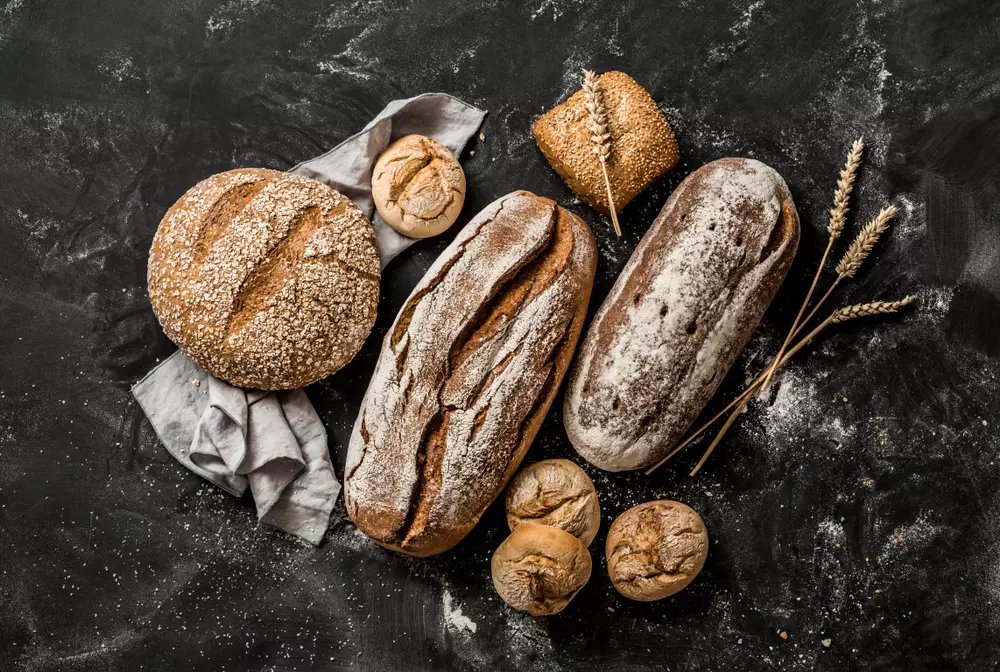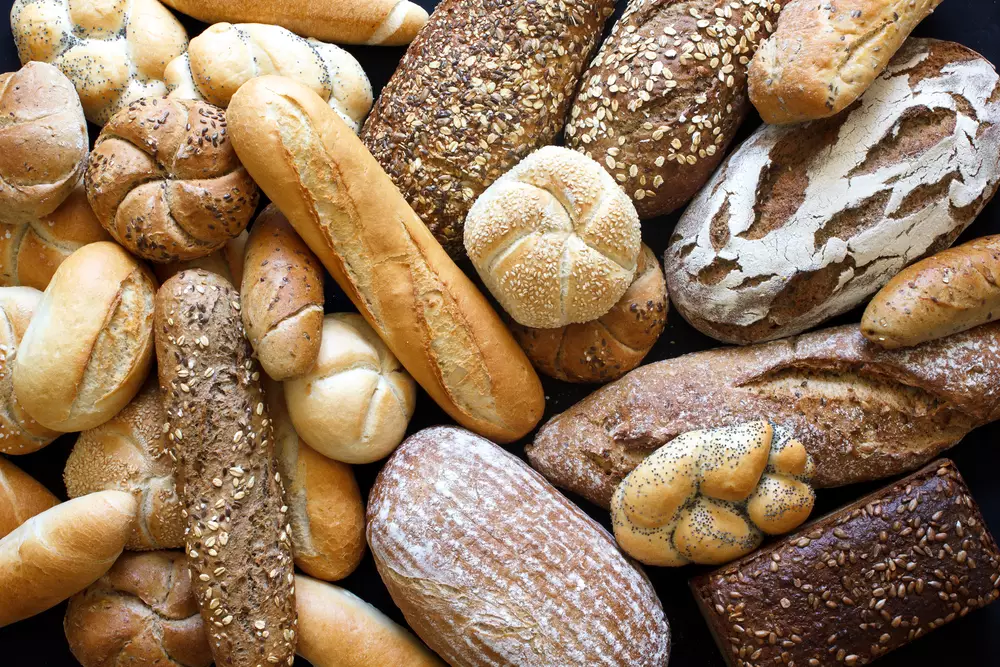Stale bread is a common issue that most of us have encountered at some point in our lives. Whether it’s due to forgetfulness or simply buying too much bread, it’s easy to end up with a loaf that’s past its prime. Fortunately, there are several ways to bring stale bread back to life.
From using steam to adding moisture, these methods can help soften even the driest and toughest bread. Not only will you be able to salvage your stale bread, but you’ll also save money and reduce food waste in the process. So, if you’re looking to revive your stale bread and enjoy it once again, read on to discover our top tips and tricks.
If you’ve ever left the bread out for too long or forgotten about a loaf in the back of your pantry, you know that stale bread can be dry, tough, and unappetizing. However, there’s no need to throw away your stale bread just yet. With a few simple tricks, you can easily transform your stale bread into soft, moist, and delicious slices that are perfect for sandwiches, toast, or bread pudding.
In this guide, we’ll show you how to make stale bread soft again, using common ingredients and kitchen tools. Whether you’re dealing with a few slices or a whole loaf, these tips will help you rescue your bread and prevent food waste.
Why Does Bread Go Stale?
Bread goes stale due to a process called retrogradation, which is the natural aging of starch molecules. When the bread is baked, the heat causes the starch molecules in the bread to absorb moisture and gelatinize. As the bread cools, the moisture evaporates and the starch molecules start to re-form into their crystalline state, resulting in a firmer texture.
Over time, the starch molecules continue to retrograde and become even more tightly packed, leading to a dry, crumbly texture commonly associated with stale bread. This process is accelerated in bread that has been sliced or exposed to air, which allows moisture to escape more quickly.
Additionally, bread that contains preservatives or additives may take longer to go stale, but it will still eventually stale due to the natural process of retrogradation.

The Science Behind Stale Bread
Stale bread is the result of a chemical process called retrogradation, which occurs when starch molecules in bread start to crystallize and become more tightly packed. When the bread is baked, the heat causes the starch molecules to absorb moisture and gelatinize, giving the bread its soft, chewy texture.
As the bread cools, the moisture evaporates and the starch molecules begin to retrograde, meaning they start to re-form into their crystalline state. This process is accelerated in bread that has been sliced or exposed to air, as the moisture can escape more easily.
As the starch molecules continue to retrograde, they become more and more tightly packed, resulting in a dry, crumbly texture commonly associated with stale bread. The proteins in the bread also break down over time, further contributing to the changes in texture and taste.
There are several ways to reverse the process of retrogradation and make stale bread soft again, including adding moisture, using heat, and rehydrating with liquid. However, it’s important to note that once the bread has gone stale, it cannot be returned to its original fresh state. The best way to avoid stale bread is to store it properly and consume it within a few days of baking.
5 Methods for Softening Stale Bread
Method 1: Adding Moisture to Stale Bread
Adding moisture is a simple and effective way to soften stale bread. Here are the steps to follow:
- Preheat your oven to 300 °F (150 °C).
- Use a spray bottle or a damp cloth to lightly moisten the surface of the stale bread with water.
- Place the bread on a baking sheet and put it in the oven.
- Heat the bread for 5–10 minutes, or until it is warm and soft to the touch.
- Remove the bread from the oven and allow it to cool slightly before serving.
Note: Be careful not to over-moisten the bread, as it can become too soggy. Also, this method is not recommended for bread that is too hard or moldy, as it may not be safe to eat.
Method 2: Using Heat to Soften Stale Bread
Using heat is another effective way to soften stale bread. Here are the steps to follow:
- Preheat your oven to 325 °F (160 °C).
- Take a damp kitchen towel and wrap the stale bread in it.
- Place the wrapped bread on a baking sheet and put it in the oven.
- Heat the bread for 10–15 minutes, or until it is warm and soft to the touch.
- Remove the bread from the oven and unwrap it from the towel.
- Allow the bread to cool slightly before serving.
Note: Be careful not to overheat the bread, as it can become too dry or burn. This method works best for bread that is only slightly stale and still edible.
Method 3: Rehydrating Stale Bread with Liquid
Rehydrating stale bread with liquid is another effective way to soften it. Here are the steps to follow:
- Boil water or broth in a pot.
- Cut the stale bread into small pieces.
- Place the bread pieces in a heat-safe bowl.
- Pour the boiling liquid over the bread, making sure to cover all the pieces.
- Let the bread soak for 10-15 minutes, or until it has absorbed the liquid.
- Remove the bread from the liquid and drain any excess liquid.
- Heat the bread in the microwave or oven for a few minutes, or until it is warm and soft to the touch.
- Serve the bread while it is still warm.
Note: You can use any type of liquid for this method, such as water, broth, milk, or even wine, depending on your preference. However, be careful not to oversaturate the bread with liquid, as it can become too mushy.
Method 4: Making Stale Bread Soft with Fat
Using fat is another way to soften stale bread. Here are the steps to follow:
- Preheat your oven to 325°F (160°C).
- Melt butter, oil, or any other type of fat in a small saucepan or in the microwave.
- Use a pastry brush or a spoon to apply a thin layer of melted fat over the surface of the stale bread.
- Place the bread on a baking sheet and put it in the oven.
- Heat the bread for 5-10 minutes, or until it is warm and soft to the touch.
- Remove the bread from the oven and allow it to cool slightly before serving.
Note: This method adds extra flavor to the bread, but it also adds extra calories and fat. Be careful not to apply too much fat, as it can make the bread too greasy. Additionally, this method is not recommended for people with dietary restrictions or allergies to certain types of fat.
Method 5: Using Stale Bread in Recipes
Instead of trying to soften stale bread, you can also use it in various recipes that call for bread as an ingredient. Here are some examples:
- Bread Pudding: Cut the stale bread into small pieces and use it as the base for a bread pudding. Mix it with eggs, milk, sugar, and any other flavorings you like, and bake it in the oven until it sets.
- French Toast: Dip slices of stale bread in an egg and milk mixture, and fry them on a skillet until they are golden brown. Serve with syrup and butter.
- Croutons: Cut the stale bread into small cubes, toss them with olive oil and seasonings, and bake them in the oven until they are crispy. Use them as a topping for salads or soups.
- Bread Crumbs: Process the stale bread in a food processor until it turns into fine crumbs. Use them as a coating for fried foods or as a binder for meatballs and meatloaf.
Note: Using stale bread in recipes is a great way to avoid waste and get creative in the kitchen. Be sure to check that the bread is not moldy or too hard before using it.
Tips for Preventing Bread from Going Stale
Here are some tips to help prevent the bread from going stale too quickly:
- Store bread properly: Keep bread in a cool, dry place, such as a breadbox or a pantry. Avoid storing bread in the refrigerator, as it can make the bread go stale faster.
- Freeze bread: If you don’t plan on using the bread right away, consider freezing it. Wrap the bread tightly in plastic wrap or aluminum foil and store it in the freezer for up to three months. Thaw the bread at room temperature before using it.
- Cut bread only when needed: Sliced bread tends to go stale faster than unsliced bread. If you don’t plan on using the bread right away, keep it unsliced until you are ready to use it.
- Use a bread knife: When slicing bread, use a bread knife instead of a regular knife. A bread knife has a serrated edge that allows you to slice through bread without crushing it, which can help prevent the bread from going stale too quickly.
- Toast or reheat bread: If you have stale bread, consider toasting it or reheating it in the oven. This can help bring back some of the moisture and make the bread softer and more flavorful.
Conclusion: Enjoying Fresh Bread Every Time
Stale bread is an all too common problem that can be frustrating and wasteful. However, by understanding the science behind stale bread and using the methods we’ve discussed, you can soften stale bread and enjoy it as if it were fresh. Additionally, you can use stale bread in a variety of recipes to avoid waste and get creative in the kitchen.
To prevent the bread from going stale too quickly, it’s important to store it properly, cut it only when needed, and use a bread knife when slicing it. If you do have stale bread, consider toasting or reheating it to bring back some of its moisture and flavor. By following these tips, you can enjoy fresh bread every time, and reduce food waste in the process.
